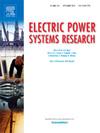A novel reinforcement learning-based multi-objective energy management system for multi-energy microgrids integrating electrical, hydrogen, and thermal elements
IF 3.3
3区 工程技术
Q2 ENGINEERING, ELECTRICAL & ELECTRONIC
引用次数: 0
Abstract
This paper presents a Reinforcement Learning (RL)-driven multi-objective function-based energy management system (RL-MOF-EMS) for optimizing the economic dispatch and lifespan of electrical, thermal, and hydrogen systems within a multi-energy microgrid (MEMG). By leveraging a discrete Deep Q-Network (DQN) agent, the RL-MOF-EMS dynamically balances energy distribution across multiple resources, ensuring optimal thermal and electrical power allocation. The system evaluates three distinct single-objective functions under different EMS strategies: 1) priority-based regulator (PBR), 2) proportional regulator (PR), and 3) particle swarm optimization (PSO). These objectives are then combined into a complex multi-objective optimization problem, solved using the RL-based DQN agent, which selects from 8 dynamic actions to enhance learning speed and accuracy. This RL approach not only accelerates decision-making but also ensures robust and real-time optimization, driving the efficient operation of MEMG systems. The performance is rigorously tested in Simulink under diverse weather conditions and fluctuating thermal and electrical demand profiles. The results are compared against an EMS based on a nonlinear MATLAB optimizer, demonstrating the effectiveness of the RL-MOF-EMS in coordinating power flows from energy sources and storages. The proposed RL-EMS outperforms the FM-EMS by achieving lower operational costs (0.704 €/h vs. 0.767 €/h) and heating costs (1.327 €/h vs. 1.484 €/h), while maintaining a higher hydrogen utilization rate (71.43 % vs. 63.15 %) and state of charge (60.83 % vs. 58.30 %). Additionally, RL-EMS demonstrates superior multi-objective balancing, with a lower overall MOF value and improved performance across key objectives, including operational efficiency, degradation minimization, and heating cost reduction.
求助全文
约1分钟内获得全文
求助全文
来源期刊

Electric Power Systems Research
工程技术-工程:电子与电气
CiteScore
7.50
自引率
17.90%
发文量
963
审稿时长
3.8 months
期刊介绍:
Electric Power Systems Research is an international medium for the publication of original papers concerned with the generation, transmission, distribution and utilization of electrical energy. The journal aims at presenting important results of work in this field, whether in the form of applied research, development of new procedures or components, orginal application of existing knowledge or new designapproaches. The scope of Electric Power Systems Research is broad, encompassing all aspects of electric power systems. The following list of topics is not intended to be exhaustive, but rather to indicate topics that fall within the journal purview.
• Generation techniques ranging from advances in conventional electromechanical methods, through nuclear power generation, to renewable energy generation.
• Transmission, spanning the broad area from UHV (ac and dc) to network operation and protection, line routing and design.
• Substation work: equipment design, protection and control systems.
• Distribution techniques, equipment development, and smart grids.
• The utilization area from energy efficiency to distributed load levelling techniques.
• Systems studies including control techniques, planning, optimization methods, stability, security assessment and insulation coordination.
 求助内容:
求助内容: 应助结果提醒方式:
应助结果提醒方式:


